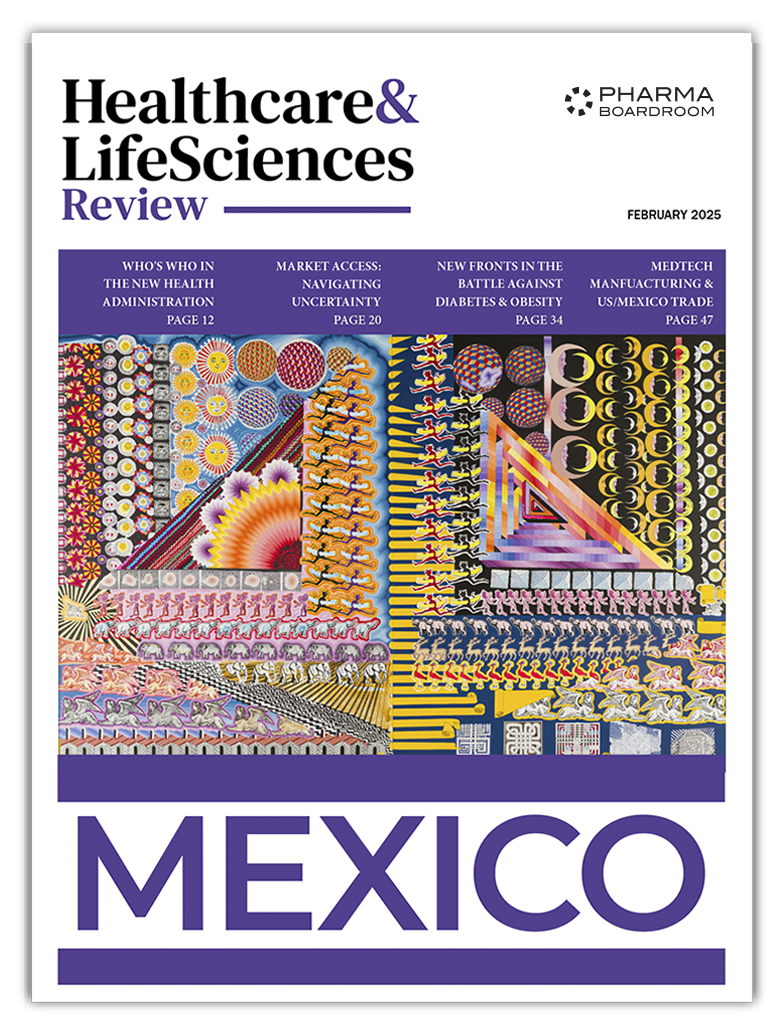Rare diseases, by definition, only affect small patient populations. However, when the more than 7,000 known rare conditions are taken together, their impact is enormous. Rare disease patients, for example, often face delayed diagnoses, limited treatment options, and a lack of specialised care compared to those suffering from more common and well-funded conditions.
Additionally, the economic consequences are huge and growing. A 2021 study by the US National Institutes of Health (NIH) found that individual healthcare costs for people with rare diseases are three to five times greater than for those without. Moreover, a 2022 Chiesi and IQVIA report found that 24 rare diseases across five therapeutic areas cost society USD 125 billion globally, with an average per-patient economic burden of USD 266,000 per year. This is about ten times higher than the per-patient cost associated with more common diseases.
These economic, societal and health challenges are particularly pronounced in developing markets. Often in these countries, healthcare systems diagnose rare diseases too late, regulatory authorities are unequipped to effectively evaluate niche therapies, and national healthcare systems are unable to reimburse them, leaving many patients in limbo.
Dialling Down on Diagnosis
In Mexico’s case, while the country has established a legal classification for rare diseases (the World Health Organization’s definition of a condition that affects fewer than five individuals in 10,000), major challenges remain in diagnosing patients. One of the biggest challenges is Mexico’s lack of a formal national registry for rare diseases.
Despite multiple efforts to create one, the true prevalence of rare diseases in the country remains unclear. For Jesus Navarro, president of the Mexican Organization for Rare Diseases (OMER), this leads to “a lot of time and money spent on treating undiagnosed or misdiagnosed rare diseases.”
This issue is worsened by gaps in medical education, leaving healthcare professionals ill-prepared to identify early signs of rare diseases in their patients. “Many of these conditions can be easily mistaken for more common ones due to similar symptoms,” explains pharma industry executive David López García.
“For example, Gaucher disease begins with blood issues, which are also common in various other diseases. While there has been notable progress in recent years, with improved educational tools and more comprehensive information, gaps remain, and patients often consult multiple specialists over several years before a rare disease diagnosis is considered.”
Additionally, much of the Mexican healthcare system simply lacks the hardware necessary to make timely and accurate assessments of rare diseases. “The lack of molecular diagnostic testing [techniques that analyse DNA, RNA, or proteins to detect diseases, genetic conditions, or infections with high precision], which is essential for confirming rare disease diagnoses, is a critical gap in the current system,” says Nicolas Linares, VP & General Manager for Mexico & Central America at Ultragenyx Pharmaceutical.
Ultragenyx, a US biotech focused on rare and ultra-rare diseases with three FDA-approved treatments, is attempting to fill this void through providing diagnostic testing services to patients who have been screened and are suspected of having a rare condition.
Not only does this process serve the individual patient but, as Linares points out, “it ensures that when payers are asked to reimburse treatments, they have full confidence in the accuracy of the diagnosis.”
Finding the Framework
Beyond diagnosis, there are major barriers to bringing orphan drugs [niche pharmaceuticals indicated for rare disease treatment] to patients in Mexico. Significantly, unlike in the US, much of Europe, East Asia’s largest economies, and even fellow Latin American nation Argentina, Mexico lacks an overarching legal framework for rare diseases.
Such frameworks can encourage R&D into the developments of treatments which might otherwise be neglected due to limited market potential, improve data collection and awareness, and create clear market access pathways for orphan drugs.
“The lack of a comprehensive law for rare diseases greatly affects our ability to gain market access and support patient care as efficiently as in other countries,” says Rodrigo Ruiz Mingramm, General Manager for Mexico and Latin America at Stendhal Pharma. Stendhal currently partners with Alnylam for its hepatic porphyria [a rare liver disease] medication in Mexico and the wider region.
Linares strikes a similar tone, lamenting that “Mexico’s regulatory framework for rare diseases is still developing, and while there is a legal definition in place, there isn’t a comprehensive, detailed framework. “It would be more efficient to have a clearer, standardised process,” he adds.
OMER’s Navarro proposes the creation of a Commission for the Follow-Up and Registration of Rare Diseases, which could be a key player in standardising the system and getting orphan drugs to rare disease patients who need them. This holistic Commission would provide expert opinion on the incorporation of new molecules into the system and assume responsibility for a registry of people with rare diseases, allowing for better planning.
“It would also oversee where and how these diseases are treated, in addition to pharmacovigilance and the evaluation of new technologies,” says Navarro. “They would guarantee therapeutic success and make budget planning based on the people who need treatment. This way, we could know how many people with rare diseases there are, how many receive treatment, how many could not receive it, and why.”
Strategies & Success
Despite the challenges inherent in the current piecemeal market access process – which functions through exception mechanisms that provide orphan drug recognition – there are elements that work well. “A positive aspect of the current system is the ability to base submissions on data from international regulators like the US Food and Drug Administration (FDA) or European Medicines Agency (EMA),” explains Linares.
“This is crucial for rare diseases, where building local data can be challenging due to small patient populations. Additionally, Mexico allows us to bring international product presentations, such as those used in the US or EU, without the need for a specifically tailored Mexican version which helps with production and demand planning.” Mexico is the only country in the world where Ultragenyx has successfully commercialised all four of its medicines.
Other multinationals have also been able to bring key elements of their global rare disease portfolios to Mexico. Takeda, which works on lysosomal storage diseases such as Hunter syndrome, Fabry disease, and Gaucher disease as well as hereditary angioedema (HAE) among other rare diseases “has seen considerable success in introducing these therapies to Mexico,” says General Manager Hernán Porcile.
“We have achieved this through fostering a collaborative approach within the healthcare ecosystem, involving the public sector, patients, and healthcare professionals,” he adds.
Bristol Myers Squibb too has managed to navigate Mexico’s market access, pricing and reimbursement maze to bring its treatment for myelodysplastic syndrome, a rare haematological disease, to the country. “This is a condition that hadn’t seen a new treatment in 10 to 15 years,” proudly explains General Manager Oswaldo Bernal.
“I had the opportunity to present the results from Mexico to our global team, and they were impressed by the impact we are making. Over 50 adult patients have already benefited from this new treatment, which could reduce the need for blood transfusions.”
Future Prospects
There is clearly still a long way to go in terms of correctly diagnosing, treating, and supporting more rare disease patients in Mexico. However, even in the currently fragmented system, rare disease therapies are breaking through and stakeholders perceive a shift in perception towards the field.
“Historically, government often viewed healthcare spending solely in terms of cost-effectiveness, believing that the funds used to treat one patient with a rare disease could instead benefit multiple patients with more common conditions such as diabetes or hypertension,” lays out López García.
“Increasingly, government officials are recognizing that this comparison is inherently unfair and the value of innovation in rare diseases is becoming more appreciated.”
This shift in perception equates to better access conditions, for companies, patients and the overall healthcare system. “While there are undoubtedly regulatory challenges and market access hurdles, the opportunity is undeniable,” concludes Linares.
“Other rare disease companies have demonstrated that, despite the complexities, it is possible to succeed with the right strategy. Over time, the market has become more receptive to treating rare diseases. If you develop a well-thought-out plan, it is possible to enter the market earlier than anticipated.”


